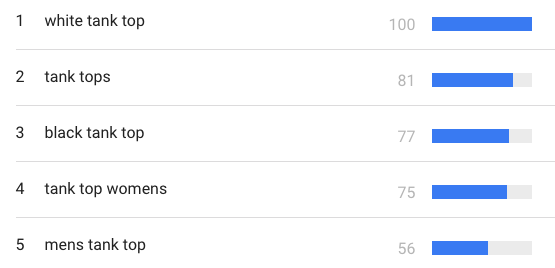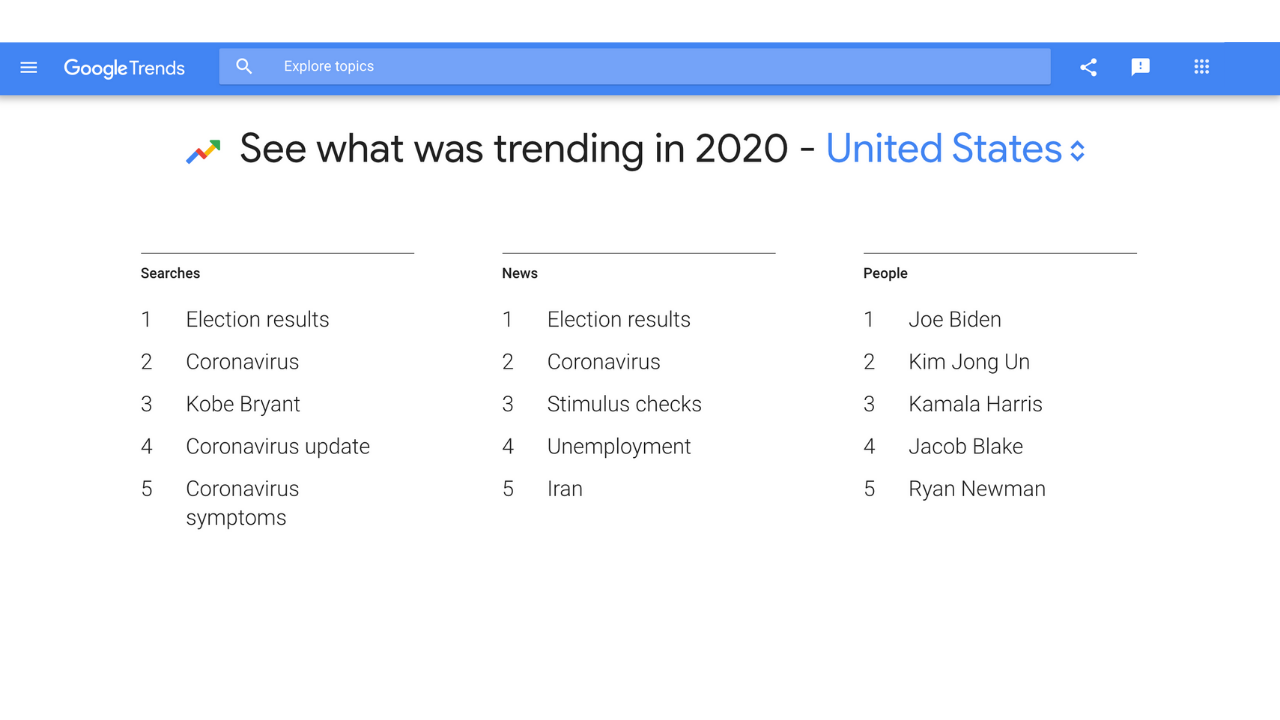Search engine marketing, or paid search, is a powerful, and heavily invested in, traction channel. But looking at a blank campaign and wondering where to start is equivalent to watching a blinking cursor on the blank first page of the next great American novel. Where to begin!
Luckily there are a lot of tools out there to get you out of the gate and headed towards the finish line. One that we love is Google Trends. After all, who knows more about Google than Google!
After identifying your goals and KPIs it’s time for the keyword research portion of your campaign. And Google Trends is a great place to start. The platform is to SEM what Google Search Console is to SEO. It allows you to identify keywords that are trending, research volume of searches over time or even just browse for new keywords.
While it’s understood that keywords with higher search volume are going to cost more on average, you also don’t want to invest in keywords that aren’t being searched for at all. Or ones that are sharply declining. Or invest in regions with very little activity.
So let’s run through an example. Say you’re a clothing company releasing a new line of tank tops and are looking to support with a paid search campaign. Here are three simple ways you would use Google Trends.
Identify Search Volume By Time of the Year
It shouldn’t come as a surprise that search volume for “tank top” is going to ebb and flow with changes in the weather. But the beauty of Google Trends is that you can get even more specific than just spring, summer, fall or winter. The following chart illustrates search volume over the past 12 months.

It, of course, confirms our hypothesis. But it also shows that search volume starts to drop off earlier than you might expect and identifies the peak towards the end of June. That makes sense given Independence Day. Using this data you can schedule your campaigns appropriately but also consider increasing or decreasing your max CPC bids accordingly.
A by-product of gathering this data for your ad campaigns is that it can inform business decisions. Knowing when the search volume starts to increase for tank tops could be a factor in your new product release schedule. It can also inform when you run promotions or incorporate other traction channels into your overall marketing strategy.
Geographical Relevance
As with any ad campaign, you only want to pay to surface messaging to people who are most likely to convert. Again using “tank top” we ran a geographical analysis to determine what states are producing the most searches.
Given the company has a limited budget we wanted to drill down as far as possible to really optimize our spend. So we filtered by cities rather than states.

As with the timeframe chart, the numbers on the right are indexes, not the total volume. The number 100 means that location, New York in this example, is the location with the highest frequency of searches as a percentage of its overall search usage. That’s important to note has it pertains to the overall population. A smaller city or state that has an above-average amount of searches for “tank top” is going to rank higher than a bigger city with an average amount of searches. But that doesn’t mean the volume is higher.
While the timeframe analysis tells us when this tells us where for our ad groups. We can either target cities and states specifically, or flip the list and exclude areas that aren’t going to net the results we are looking for.
The Keywords You Didn’t Think About
Google Trends is not only a good resource for researching and testing out keywords you have identified but also discovering ones you may not have thought of thanks to the “related queries” feature.

Once again using “tank top” the tool was able to tell us whether more people as a fraction of overall searches are looking for women’s versus men’s, or which color people most frequently search for.
There are a lot of powerful keyword research tools, including SEMRush and Google Ads Keyword Planner, that you will want to employ in your campaign planning, but starting with Google Trends is never a bad thing.
While these are three high-level uses, there are a ton more ways to use the platform. And it’s not just limited to standard searches. You can filter by images, video and more. We encourage you to spend some time there experimenting. Just be forewarned, it can be quite the rabbit hole!
To learn more about search engine marketing check out our podcast and this video.

